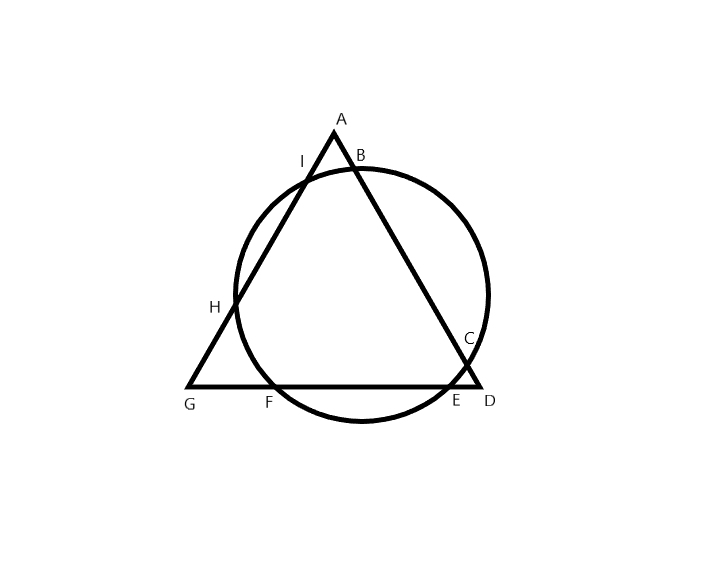This section requires Javascript.
You are seeing this because something didn't load right. We suggest you, (a) try
refreshing the page, (b) enabling javascript if it is disabled on your browser and,
finally, (c)
loading the
non-javascript version of this page
. We're sorry about the hassle.

Let v = A I , w = G H , x = F G , y = E F , and z = D E .
Since one side of the equilateral triangle is 2 + 1 3 + 1 = 1 6 , v + 7 + w = 1 6 and x + y + z = 1 6 .
According to the intersecting secant theorem : v ( v + 7 ) = 2 ( 2 + 1 3 ) , which means v = 3 , and since v + 7 + w = 1 6 , w = 6 .
Also according to the intersecting secant theorem, x ( x + y ) = 6 ( 6 + 7 ) and z ( z + y ) = 1 ( 1 + 1 3 ) . Using these equations with x + y + z = 1 6 and solving the system of equations gives x = 1 0 − 2 2 , y = 2 2 2 , and z = 6 − 2 2 .
Therefore, E F = y = 2 2 2 ≈ 9 . 3 8 .